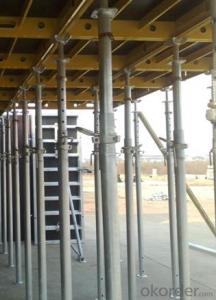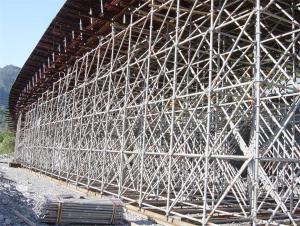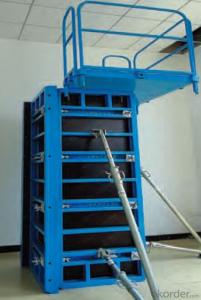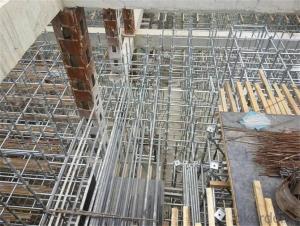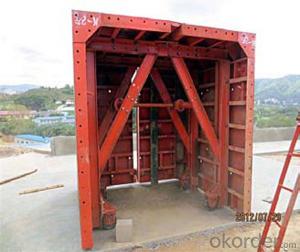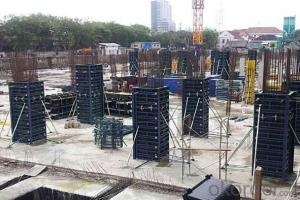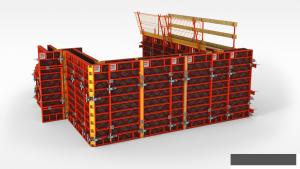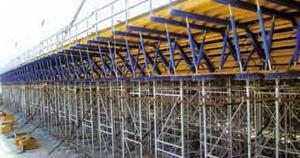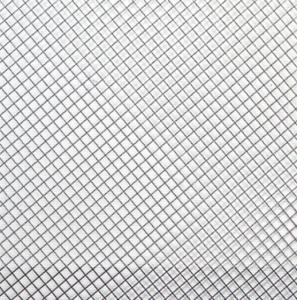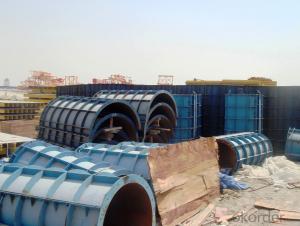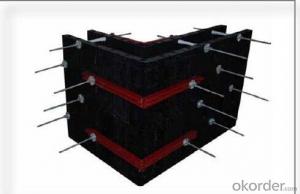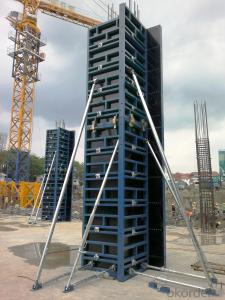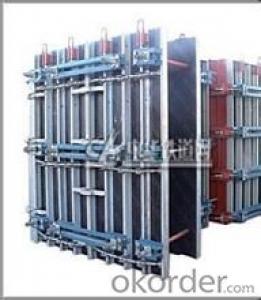Ring-Lock Scaffolding ,Tower Scaffolding with Hot or Cold Galvanized Surface
- Loading Port:
- Shanghai
- Payment Terms:
- TT OR LC
- Min Order Qty:
- 1000 m²
- Supply Capability:
- 100000 m²/month
OKorder Service Pledge
OKorder Financial Service
You Might Also Like
1.Structure of Ring lock Description
Ringlock Scaffolding system is the most popular used Scaffolding system in the world.It will greatly reduce the cost because of the following advantages
Packaging & Delivery
Packaging Details:
Pallet or bag or upon client's request
Delivery Detail:
35days
2.Main Features of Ringlock
It will greatly reduce the cost because of the following advantages
1)Using less pipes
2)Easy to install
3)It can be used again and again for nearly 20years
3.Ring lock product pictures:
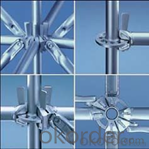
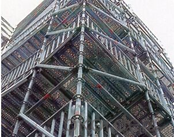
4.Ringlock Product Description
Type: ringlock scaffolding diagonal Brace
specification : Ø48.3×3.20
material:: steel Q235
Finished: Hot DIP galvanized, painted
Diagonal length(m) :Weight(kg)
0.9m * 1.25m 6.28
1.25m * 2.7m 11.45
5.FAQ
We have organized several common questions for our clients,may help you sincerely:
1)How about your company?
CNBM International Corporation, China National Building Materials (Group) Corporation, is one of the largest companies in China building material equipment industry, Our formwork and scaffolding are largely used in both domestic and all over world;
2)How many Scaffolding your company have?
Here comes our 5 types of Scaffolding systems:
- Cup lock Scaffolding(C-Lock Scaffolding)
- Ring lock Scaffolding
-Kwistage Scaffolding
-H-frame Scaffolding
-ID15 Scaffolding Tower, this type Scaffolding is the most widely used in construction, such like bridge.
3)How long can we receive the product after purchase?
Lead time is about 30days after getting the signed PI and deposit.
- Q:What are the different types of reinforcement systems used with steel frame formwork?
- Construction projects utilize various reinforcement systems with steel frame formwork to enhance strength and stability. These systems ensure the formwork's ability to withstand the weight and pressure exerted by the poured concrete. An example of a commonly employed reinforcement system for steel frame formwork is the incorporation of steel bars or rods. These bars are positioned both horizontally and vertically within the formwork, creating a grid-like pattern. This arrangement serves to evenly distribute the concrete's weight and pressure, preventing any collapse or deformation of the formwork. Another reinforcement system employed with steel frame formwork involves the utilization of steel mesh or wire. This mesh or wire is inserted into the formwork to provide further reinforcement and prevent the concrete from cracking or breaking under pressure. Ties or clips are used to secure the mesh or wire in place, ensuring its stability during the pouring and curing process. Besides steel bars and mesh, other reinforcement systems for steel frame formwork include the use of fiber-reinforced polymers (FRPs) and plastic or composite materials. These lightweight yet robust materials offer excellent reinforcement properties. FRPs are particularly beneficial in scenarios requiring corrosion resistance, as they are not susceptible to rust or degradation. Ultimately, the choice of reinforcement system for steel frame formwork depends on various factors, including project requirements, concrete type and load, and desired strength and stability levels. Consulting a structural engineer or construction professional is crucial to determine the most suitable reinforcement system for a specific project.
- Q:Can steel frame formwork be used for residential and housing construction?
- Yes, steel frame formwork can be used for residential and housing construction. Steel frame formwork is a type of construction system that uses steel frames to support the weight of the concrete during the pouring and curing process. This formwork system is versatile and can be used for various types of construction projects, including residential and housing construction. One of the advantages of using steel frame formwork for residential and housing construction is its durability and strength. Steel frames are capable of withstanding heavy loads and provide excellent support for concrete structures. This makes them suitable for constructing residential buildings that require strong and stable structures. Furthermore, steel frame formwork is highly adaptable and can be customized to meet the specific requirements of a residential construction project. The frames can be easily adjusted and assembled to create different shapes and sizes, allowing for flexibility in design. In addition, steel frame formwork allows for faster construction compared to traditional formwork systems. The pre-fabricated steel frames can be quickly erected on-site, reducing construction time and labor costs. This is particularly advantageous for residential and housing construction projects that require fast completion to meet market demands. Moreover, steel frame formwork offers a smooth and seamless finish to concrete structures. The frames are designed to provide a uniform surface, minimizing the need for additional finishing work. This results in time and cost savings during the construction process. Overall, steel frame formwork is a suitable choice for residential and housing construction. Its durability, adaptability, and efficiency make it an ideal construction system for creating strong and aesthetically pleasing structures in a timely manner.
- Q:How does steel frame formwork provide stability during concrete pouring?
- Steel frame formwork provides stability during concrete pouring by acting as a strong and rigid structure that supports the weight of the wet concrete. It prevents the formwork from buckling or collapsing under the pressure, ensuring that the concrete is poured and cured properly. The steel frame also allows for precise alignment and leveling of the formwork, resulting in a consistent and stable surface for the concrete to be poured onto.
- Q:Can steel frame formwork be used in projects with limited construction resources or equipment?
- Yes, steel frame formwork can be used in projects with limited construction resources or equipment. Steel frame formwork is known for its durability and strength, making it suitable for various construction projects. Additionally, it can be easily reused multiple times, reducing the need for frequent replacements and saving costs. Its versatility allows it to be used in diverse construction scenarios, regardless of limited resources or equipment availability.
- Q:Are there any environmental considerations associated with steel frame formwork?
- Steel frame formwork is associated with several environmental considerations. Firstly, the production of steel requires a significant amount of energy and resources, contributing to carbon emissions and environmental degradation. This makes the process of producing steel frame formwork carbon-intensive. Furthermore, steel is a non-renewable resource that cannot be easily replenished once it is used. This raises concerns about the depletion of natural resources and the long-term sustainability of steel frame formwork. Additionally, steel is prone to corrosion when exposed to moisture or chemicals, leading to the need for replacements and repairs. Disposing of old or damaged steel formwork also presents environmental challenges, as it contributes to landfill waste. On a positive note, steel frame formwork can be reused multiple times, reducing its overall environmental impact. However, the transportation and handling of heavy steel frames can still result in additional carbon emissions. To address these environmental considerations, alternative materials such as recycled plastic, bamboo, or timber should be considered for formwork. These materials are renewable, have lower carbon footprints, and can be easily reused or recycled. Additionally, implementing sustainable practices in the construction industry, such as waste reduction, optimized design, and improved energy efficiency, can help minimize the environmental impact of steel frame formwork.
- Q:Can steel frame formwork be used for post-tensioned slabs or beams?
- Yes, steel frame formwork can be used for post-tensioned slabs or beams. Steel frame formwork provides the necessary support and stability required for the post-tensioning process. The steel frames are strong and can withstand the tension forces applied during the post-tensioning operation, ensuring the structural integrity of the slabs or beams.
- Q:Can steel frame formwork be used in areas with limited space?
- Yes, steel frame formwork can be used in areas with limited space. The advantage of steel frame formwork is its flexibility and adaptability to different project requirements, including confined spaces. Unlike traditional timber formwork, steel frame formwork is lightweight and can be easily assembled and disassembled, making it suitable for tight spaces. Additionally, the modular design of steel frame formwork allows for customization and adjustment to fit specific dimensions, ensuring efficient use of space. Therefore, steel frame formwork is a viable option for construction projects in areas with limited space.
- Q:What is the typical lifespan of steel frame formwork accessories?
- The typical lifespan of steel frame formwork accessories can vary depending on various factors such as usage, maintenance, and quality of the materials. However, with proper care and regular maintenance, steel frame formwork accessories can last for many years, often exceeding 10 to 15 years or more.
- Q:What are the different types of safety barriers and guardrails used with steel frame formwork?
- There are several types of safety barriers and guardrails commonly used with steel frame formwork, including: 1. Standard guardrails: These are horizontal barriers installed along the edge of the formwork platform to prevent accidental falls. They are typically made of steel or aluminum and are designed to withstand a specified amount of force. 2. Toe boards: Toe boards are installed along the bottom edge of the formwork platform to prevent items or debris from falling off the edge. They are usually made of wood or metal and provide an additional layer of safety. 3. Handrails: Handrails are vertical barriers installed along the edges of stairs, ramps, or other elevated areas to provide support and stability for workers. They are typically made of steel or aluminum and are designed to be grasped by hand. 4. Mesh barriers: Mesh barriers are installed along the sides of the formwork platform to prevent items from falling off. They are usually made of metal or plastic and feature small openings to allow visibility and airflow while maintaining safety. 5. Safety nets: Safety nets are installed below the formwork platform to catch falling objects or workers in the event of an accident. They are typically made of high-strength polypropylene or nylon and are capable of absorbing impact forces. These safety barriers and guardrails are essential components of a comprehensive safety plan when working with steel frame formwork, helping to protect workers from falls, prevent objects from falling, and ensure a secure working environment.
- Q:How is steel frame formwork dismantled after concrete curing?
- After the concrete has cured, the dismantling process of steel frame formwork begins. This process generally involves several steps to ensure the safe and efficient removal of the formwork. 1. Inspection: Before dismantling, a thorough inspection of the concrete structure is conducted to ensure that it has achieved the required strength and stability. This inspection is critical to avoid any potential damage to the structure during dismantling. 2. Removal of Props: The first step in dismantling is to remove the props that were used to support the formwork during the concrete pouring and curing process. This is done carefully to prevent any sudden movement or collapse of the structure. 3. Stripping of Formwork Panels: The formwork panels used for shaping the concrete are then removed. This is usually done by loosening the clamps or bolts that hold the panels together. Care is taken to prevent any damage to the panels, as they may be reused for future projects. 4. Removal of Shuttering and Accessories: Once the formwork panels are removed, the shuttering and other accessories such as wedges, ties, and pins are taken down. These accessories are carefully collected and stored for reuse or recycling. 5. Cleaning and Maintenance: After the formwork is completely dismantled, the surface of the concrete structure is cleaned to remove any debris or residue left behind by the formwork. This cleaning process ensures a smooth and clean finish for the structure. 6. Storage or Disposal: Depending on the condition and quality of the dismantled formwork components, they may be stored for future use in other construction projects. If the components are damaged or no longer suitable for reuse, they are properly disposed of or recycled in accordance with environmental regulations. Overall, the dismantling of steel frame formwork after concrete curing requires careful planning, inspection, and execution to ensure the safety and integrity of the structure. Following the appropriate procedures, the process can be carried out efficiently, allowing for the completion of the construction project.
1. Manufacturer Overview |
|
|---|---|
| Location | |
| Year Established | |
| Annual Output Value | |
| Main Markets | |
| Company Certifications | |
2. Manufacturer Certificates |
|
|---|---|
| a) Certification Name | |
| Range | |
| Reference | |
| Validity Period | |
3. Manufacturer Capability |
|
|---|---|
| a)Trade Capacity | |
| Nearest Port | |
| Export Percentage | |
| No.of Employees in Trade Department | |
| Language Spoken: | |
| b)Factory Information | |
| Factory Size: | |
| No. of Production Lines | |
| Contract Manufacturing | |
| Product Price Range | |
Send your message to us
Ring-Lock Scaffolding ,Tower Scaffolding with Hot or Cold Galvanized Surface
- Loading Port:
- Shanghai
- Payment Terms:
- TT OR LC
- Min Order Qty:
- 1000 m²
- Supply Capability:
- 100000 m²/month
OKorder Service Pledge
OKorder Financial Service
Similar products
New products
Hot products
Hot Searches
